More than 250,00 rivers flow in the U.S., and while many are free from animals that could try to hurt you, others are more dangerous. Some U.S. rivers feature alligator infestions. Does this mean that you can’t swim in those waters?
No, you can still play and swim in most rivers with alligators. However, you will need to stay alert, so knowledge of which rivers could be a problem is valuable. Here’s a list of the 11 most alligator-infested rivers in the United States.
1. The Waccamaw River
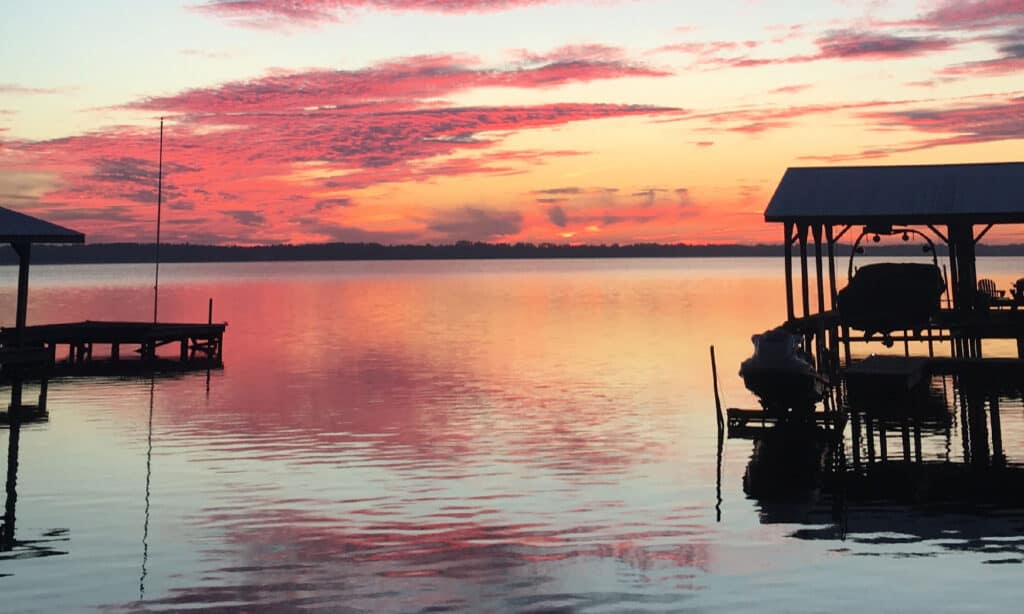
Lake Waccamaw is at the head of the Waccamaw River.
©Victoria Caine Powell/Shutterstock.com
Location: North Carolina, South Carolina
The Waccamaw River curls along southeastern North Carolina before it flows into eastern South Carolina. The 140-mile stretch is marked by differing features. In North Carolina, the Waccamaw is a sluggish backwater only navigable by canoe. Alligators thrive in these marshy wetlands.
When the river reaches South Carolina, it transforms into a major waterway. You’ll find alligators here, too, alongside old plantation houses and relics from the past. In October 2023, South Carolina hunters caught a 12-foot, 500-pound alligator on the Waccamaw.
2. Sunflower River
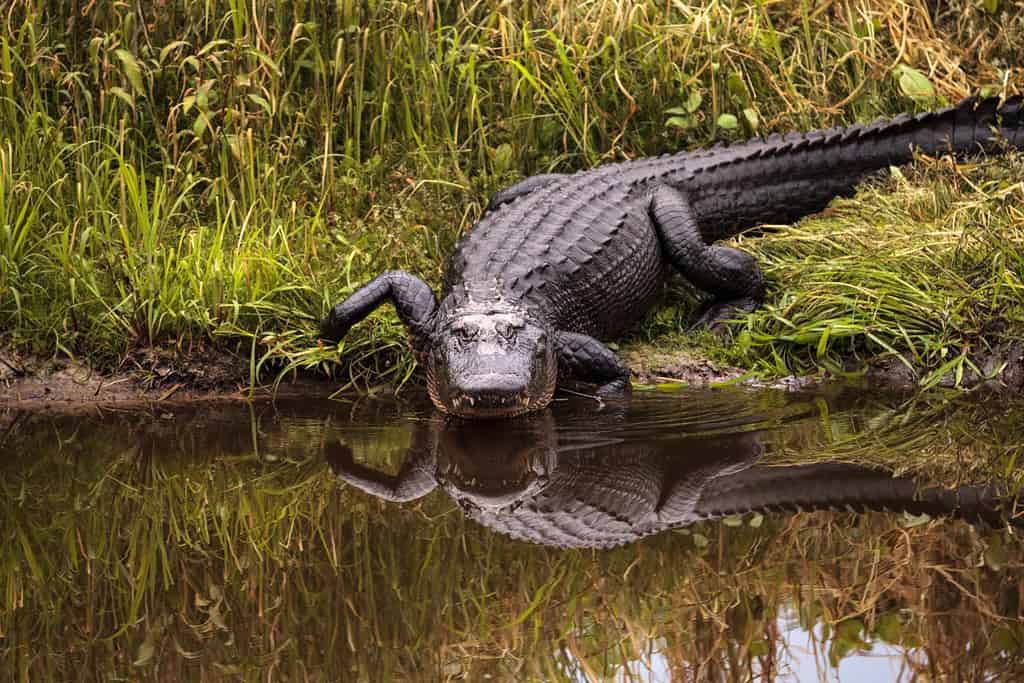
The capture of the largest alligator in Mississippi history was in the Sunflower River in 2023.
©SunflowerMomma/Shutterstock.com
Location: Mississippi
Over 400 wildlife and fish species depend on Mississippi’s Sunflower River for survival. Alligators might be the most terrifying creatures in the water, however. Every year, Mississippi lets 1,000 permitted hunters hunt alligators for ten days. In the 2023 hunt, a group captured the largest alligator in Mississippi history in the Sunflower River. The gigantic animal weighed 800.2 pounds.
Sunflower River stretches for about 100 miles. It’s not the easiest spot to find, but if you make the trek, your reward will be glimpses of diverse creatures. Just watch out for the alligators!
3. Savannah River
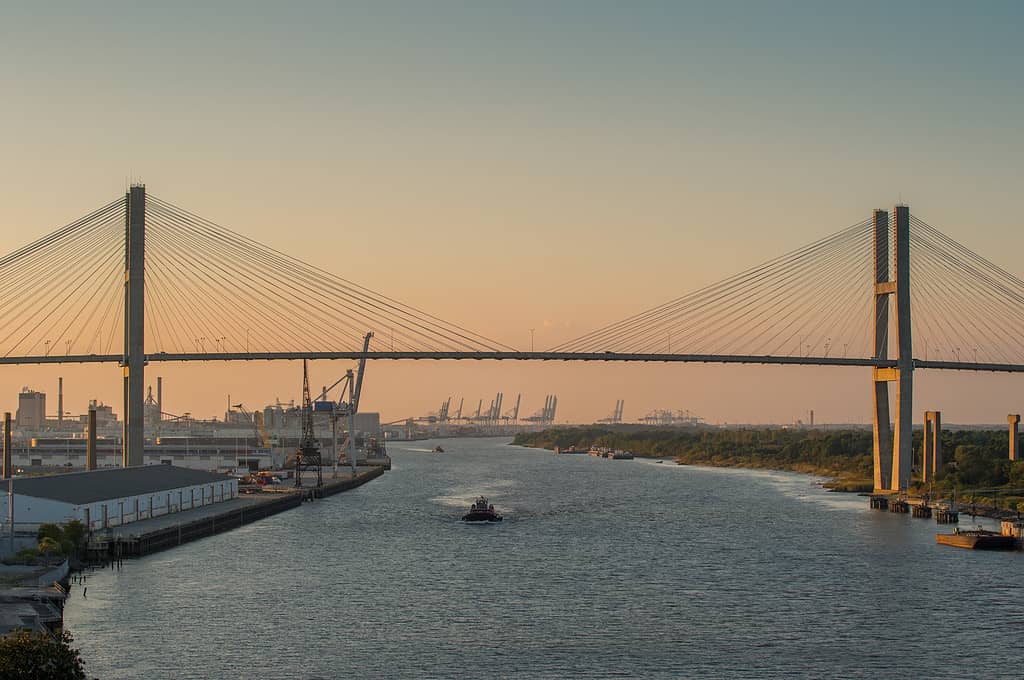
Recreational and commercial boats travel the Savannah River every day.
©Rolf_52/iStock via Getty Images
Location: Georgia
Going to Savannah, GA, is a good start if you want to see an alligator. Experts believe at least 200,000 alligators live in the state, most in the Savannah River. In fact, this river along the Georgia and South Carolina border might be the most alligator-infested river in the United States. It’s a major waterway, so there are 300 miles for alligators to potentially explore.
Most alligators stick to the river’s middle and lower sections, however. The animals increase as the river gets closer to its head, the Atlantic Ocean.
4. Brazos River
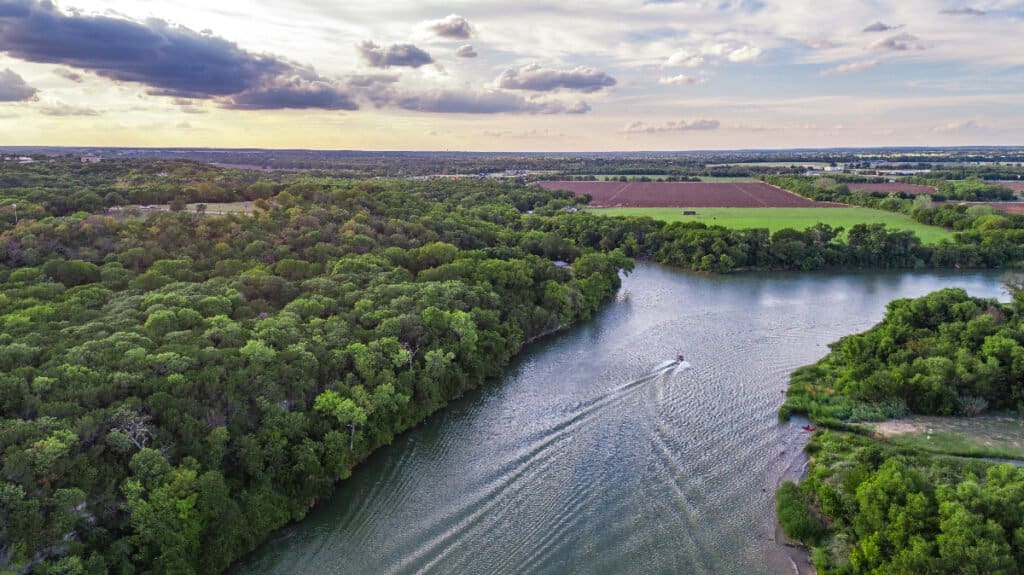
Traveling along the Brazos River would lead you through most of Texas.
©davisdeatonphotography/Shutterstock.com
Location: Texas
The Brazos River is famous for being one of the longest rivers in Texas. It snakes through most regions of the state, offering varied geography for residents — and alligators. Alligators thrive in the muddy waters, and their numbers increase as the water moves south toward the Gulf of Mexico.
You can still find a few upstream, however. A Texas resident in Waco spotted an alligator swimming in the Brazos River in November 2023. Waco is about 100 miles south of Dallas.
5. Yellow River
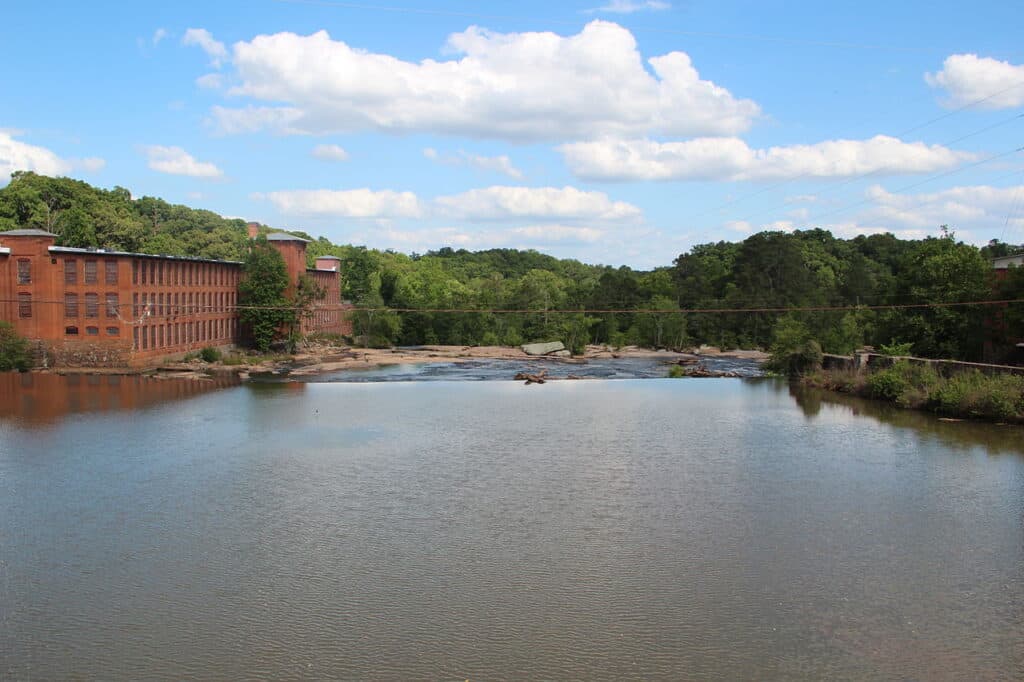
The Yellow River courses through Alabama swampland.
Location: Alabama, Florida
Alligator sightings occur frequently near the Yellow River because it winds through multiple swamplands. The entire river is 118 miles long and flows in Alabama and Florida, so there’s ample room for alligators to find secluded spots in the water.
Occasionally, an alligator will wander into a busier area and startle a few swimmers. However, attacks on humans are. There are only five alligator attacks on record in Alabama. Florida has seen 351 attacks, but the state’s alligator population is significantly larger.
6. Perdido River

A 12-foot alligator was captured in the Perdido River in 2021.
©Wirestock Creators/Shutterstock.com
Location: Alabama, Florida
The Yellow River isn’t the only alligator-infested river that passes into Alabama and Florida. The relatively small Perdido River weaves along the border between the states for 64 miles before emptying into the Gulf of Mexico.
On the riverbanks, you’ll find marshy swampland that’s terrible for campers but makes a cozy home for alligators. A brave Florida pair caught a 12-foot alligator inside the Perdido in 2021. It took them two hours just to move the animal out of the water.
7. The Nueces River

The Nueces River is known for its clear waters and frequent alligator encounters.
Location: Texas
You can find alligators within the sparkling, clear waters of the Nueces River if you search hard. The river’s 315-mile path winds through central and southern Texas until it reaches the Gulf of Mexico.
Abundant plants and wildlife live near or in the Nueces River. Nueces actually means “nuts” in Spanish, a nod to the pecan trees that once lined its banks. Now, the historic river is more well-known for its large alligator population. Some experts say that Nueces originally represented the alligators’ southernmost home in Texas, explaining that the first alligators in Texas’ Rio Grande River were escaped or abandoned pets.
8. Congaree River
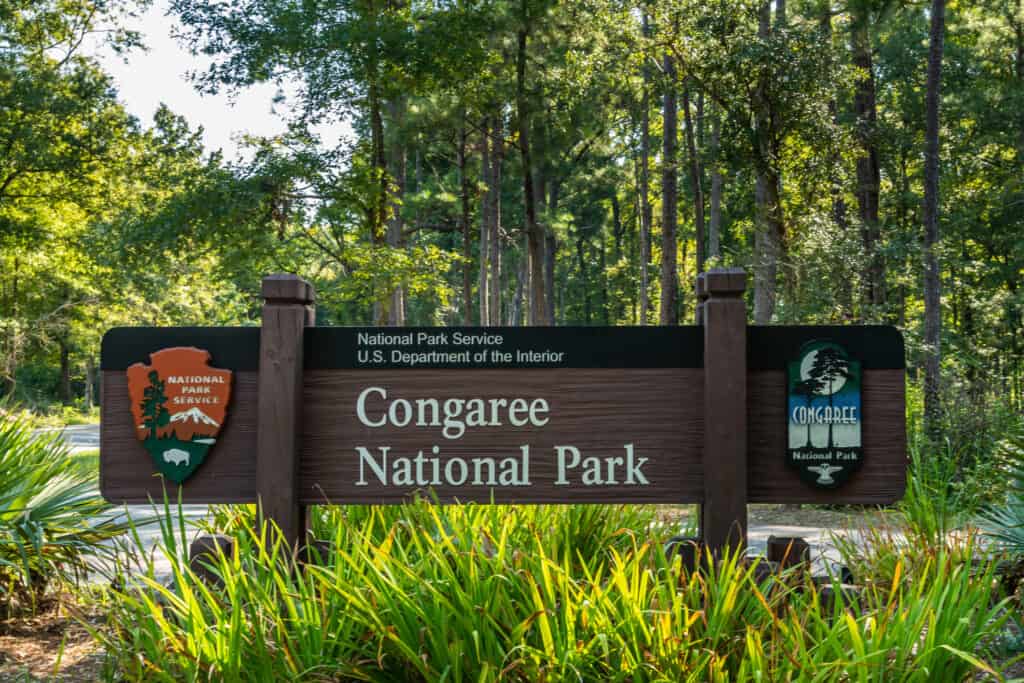
Congaree National Park is part of the Congaree River.
©iStock.com/kellyvandellen
Location: South Carolina
The Congaree River is the shortest on this list, only measuring 53 miles long. It’s extremely wide, however, and navigable by barge traffic.
Beyond the commercial vessels, alligators and tourists are familiar sights here, as the river features the Congaree National Park. It’s an old-growth forest with numerous hiking trails and pretty birds dotting the skies. A day at this park is a safe way to experience a swamp.
To see an alligator, head to less-trafficked areas and keep your eyes peeled. Alligators like to stay still, so they can be challenging to spot.
9. Ouachita River

Wildlife experts often relocate alligators who approach human habitats to the Ouachita River.
©wellesenterprises/iStock via Getty Images
Location: Arkansas, Louisiana
Historically, alligators flourished in Arkansas. Their number dropped dramatically by the 1960s due to rampant hunting and habitat loss. The government took action by preserving land, limiting alligator hunting permits, and relocating alligators to the state. Many of the relocated alligators found homes in the Ouachita River.
Today, 100,000 alligators live in Arkansas. The ones living around the Ouachita River sometimes stray into nearby neighborhoods, but they cause more terror than actual damage. These alligators, and others loose in urban areas, are often captured and brought to the Ouachita River, just like the alligators that helped revitalize the state’s population in the 60s and 70s.
10. Rio Grande River
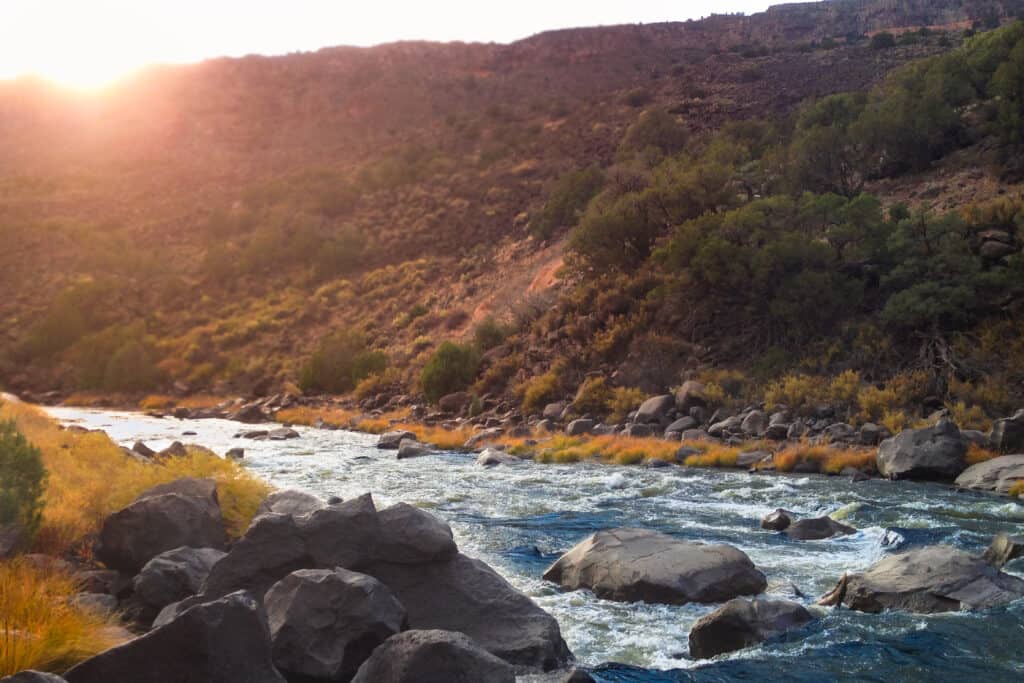
The Rio Grande River’s coasts provide a habitat for alligators.
©designwithval/Shutterstock.com
Location: Texas, Mexico
Most of the Rio Grande River is unsuitable for alligators who need shallow, swampy waters full of prey to flourish. As we mentioned above, many experts believe that the first alligators to move into the Rio Grande were placed there by humans.
Today, no one knows how many alligators live on the Rio Grande River’s coasts.
11. Withlacoochee River

You might see an alligator when you visit the Withlacoochee River.
©6381380/iStock via Getty Images
Florida’s Withlacoochee River is 160 miles long. If you explore the river or the adjacent Withlacoochee State Trail, you might be lucky enough to spot an alligator. If you’d rather avoid meeting the scaly reptile, don’t worry. The alligators in this area are spread out and easy to avoid.
Summary of the Most Alligator-Infested Rivers in the United States
| # | River Name | Location |
|---|---|---|
| 1 | Waccamaw River | North Carolina, South Carolina |
| 2 | Sunflower River | Mississippi |
| 3 | Savannah River | Georgia |
| 4 | Brazos River | Texas |
| 5 | Yellow River | Alabama, Florida |
| 6 | Perdido River | Alabama, Florida |
| 7 | The Nueces River | Texas |
| 8 | Congaree River | South Carolina |
| 9 | Ouachita River | Arkansas, Louisiana |
| 10 | Rio Grande River | Texas, Mexico |
| 11 | Withlacoochee River | Florida |
The photo featured at the top of this post is © Deborah Ferrin/Shutterstock.com
Thank you for reading! Have some feedback for us? Contact the AZ Animals editorial team.







